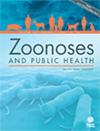Human cat borne rabies as the new epidemiology of the disease in the Andes mountains
Abstract
Background
Rabies virus (RABV) is the etiologic agent of rabies, a fatal brain disease in mammals. Rabies circulation has historically involved the dog has the main source of human rabies worldwide. Nevertheless, in Colombia, cats (Felis catus) have become a relevant species in the epidemiology of rabies.
Aims
To characterize rabies cases in humans in Colombia in the last three decades in the context of the epidemiology of the aggressor animal.
Materials and Methods
We conducted a retrospective longitudinal epidemiological study of human rabies caused by cats’ aggression, collecting primary and secondary information. Variables considered included the demography of the patient, symptoms, information about the aggressor animal as the source of infection and the viral variant identified.
Results
We found that the distribution of rabies incidence over the years has been constant in Colombia. Nevertheless, between 2003 and 2012 a peak of cases occurred in rural Colombia where cats were the most frequent aggressor animal reported. Most cats involved in aggression were unvaccinated against rabies. Cat's clinical signs at the time of the report of the human cases included hypersalivation and changes in behaviour. Human patients were mostly children and female and the exposure primarily corresponded to bite and puncture lacerations in hands. The RABV lineage detected in most cases corresponded to variant 3, linked to the common vampire bat (Desmodus rotundus). The geographical presentation of cat borne RABV in humans occurred along the Andes mountains, epidemiologically known as the rabies red Andean corridor.
Discussion
By finding cats as the primary source of rabies spillover transmission in Colombia, this report highlights the importance of revising national rabies control and prevention protocol in countries in the Andes region.
Conclusion
Our results demonstrate that rabies vaccination for outdoor cats needs to prioritize to reduce the number of rabies-related human deaths.

 求助内容:
求助内容: 应助结果提醒方式:
应助结果提醒方式:


